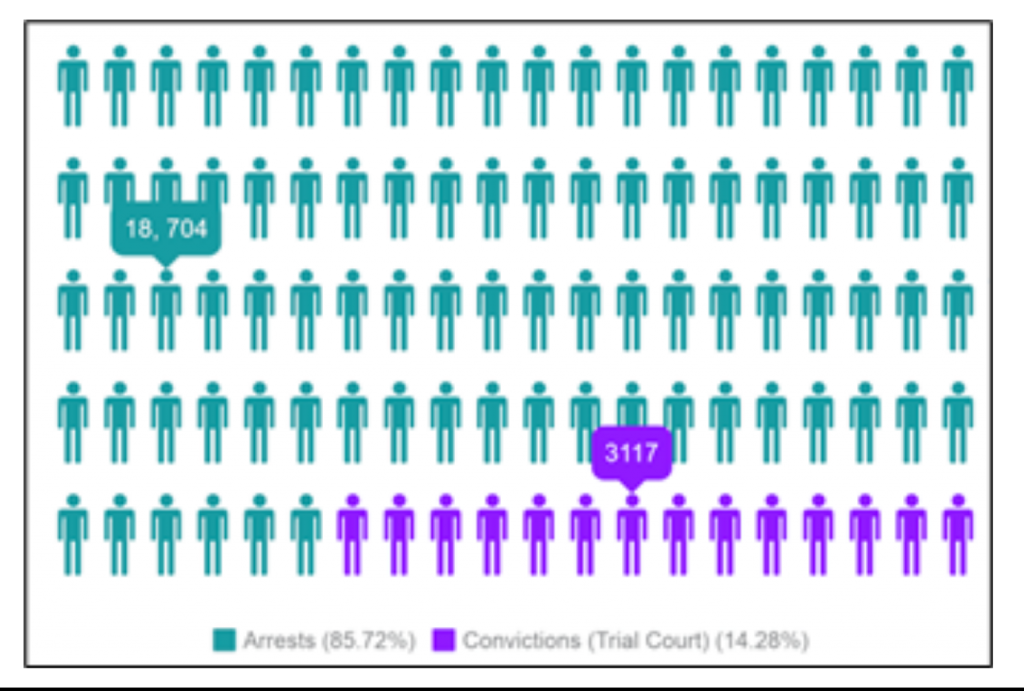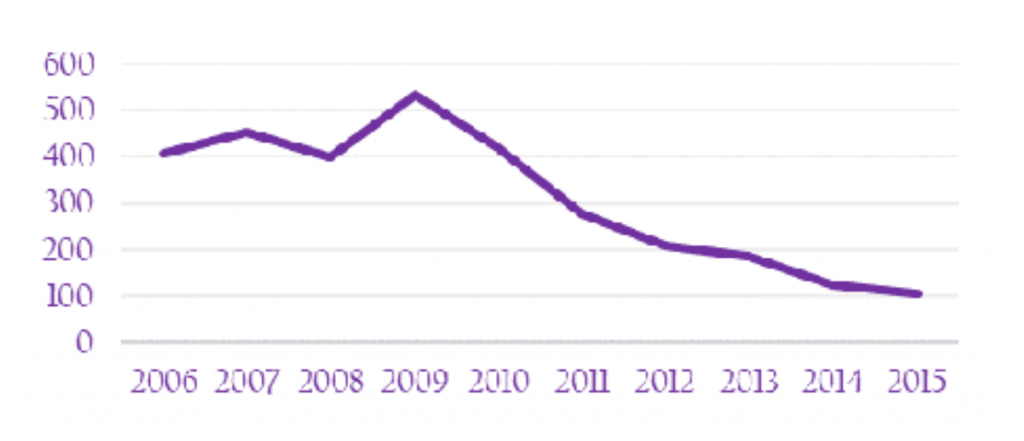USING STATE-LEVEL ANTI-COUNTERFEITING STATUES: EVIDENCE FROM NEW YORK
Kari Kammel, Esq.
Assistant Director of Education and Outreach, Center for Anti-Counterfeiting and Product Protection
Brandon A. Sullivan, PhD
Assistant Professor, Center for Anti-Counterfeiting and Product Protection
Lorryn Young JD, expected 2018)
Legal Researcher, Center for Anti-Counterfeiting and Product Protection
In mid-2017, two detectives in the Nassau County, New York, Police Department Asset and Forfeiture Intelligence Unit launched an investigation into local product counterfeiting activities with cooperation from the New York Police Department and the U.S. Department of Homeland Security (Homeland Security Investigations and Customs and Border Protection). In late December, the investigation culminated in the arrest of a father and two sons of a local family and the seizure of counterfeit goods with a street value of more than $25 million (Lapin, 2017; Fuller, 2017).
This case illustrates local law enforcement efforts to protect intellectual property rights in the State of New York. Such participation can extend even more deeply through the application of state anti-counterfeiting statutes. As our earlier work showed, state anti-counterfeit laws offer an additional means beyond federal statutes of protecting intellectual property rights.
New York has been particularly successful in going after counterfeiters, getting more trademark counterfeiting convictions under state law than any other state. New York is a natural focus for anti-counterfeiting efforts. It is home to the most Fortune 500 companies of any state (Hackett, 2015), and hence is home to many brands. It has the most-populous city in the United States and the fourth-largest population among the 50 states.
As part of our ongoing research into state-level trademark counterfeiting laws and the enforcement of these laws, we investigated the adjudication process in New York, from arrest to appeal, to better understand how trademark counterfeiting cases fared there. Below we discuss some of our preliminary findings from these data.
HOW DOES NEW YORK COMPARE TO OTHER STATES?
While New York leads the way in enforcement, its criminal trademark counterfeiting statutes are not as strong as those in some other states (Wilson, Sullivan, Johnson, Fenoff, and Kammel, 2016). Its statutes impose relatively low penalties. Its maximum fine for counterfeiting is $10,000; most states have maximum fines of $20,000 or more. It imposes prison sentences of no more than five years; one-third of states have higher maximum sentences. Nearly half the states allow penalty enhancements for the number of counterfeit items, more than one-third have penalty enhancements for manufacturing counterfeits, and most have penalty enhancements for prior criminal offenses. New York has none of these enhancements. New York prosecutors must prove the intent to defraud or deceive to obtain a conviction, a hurdle that prosecutors in more than one-fourth of other states do not face.

New York does, however, have some notable strengths in its statutes. It allows for the forfeiture of counterfeit goods and instrumentalities and the destruction of counterfeit goods. It does not require trademark registration as prima facie, or sufficient to establish it as a fact, evidence. New York also has sanction enhancements for the value of the items and punishments of fines, incarceration, or restitution to the victim (Wilson et al., 2016).
Finally, as noted, New York ranks first among states in enforcement of anti-counterfeiting statutes. Among the 18,704 arrests made in New York for violations of trademark counterfeiting statutes from 2006 to 2015, prosecutors won 3,117 convictions (Figure 1). Meanwhile, prosecutors in most states won less than 100, and prosecutors in several states did not win any.
WHAT ARE THE CURRENT TRENDS IN NEW YORK ENFORCEMENT?
Though New York leads all other states, two findings in our data raise some concerns: decreasing numbers of trademark counterfeiting convictions and challenges to expert testimony.
Decreasing Numbers of Convictions

Although New York has the highest number of convictions under state anti-counterfeiting laws, the number of such convictions has dramatically declined from a high of 532 in 2009 to only 105 in 2015 (Figure 2). The decline mirrors that found in other states. This trend is concerning given the essential role that states can play in anti-counterfeiting efforts and the consistent growth of trademark counterfeiting.
Challenges to Expert Witness Testimony
Private investigators or investigative firms specializing in intellectual property issues and those specifically dealing with counterfeit trademarks are used in multiple cases throughout the United States. Despite the wealth of knowledge these investigators possess, some courts have ruled that their testimony could not be used or did not meet the standard of the statute qualifying the experts. In two New York cases, the court excluded expert testimony as evidence, looking instead for non-hearsay testimony from someone who could distinguish between the counterfeit and original trademarks (People v. Rivera, 45 Misc.3d 386, 390-91 [2014]; People v. Mangane, 28 Misc. 3d 1224 [a], *2 [2010], see also People v. Kim, 163 Misc.2d 451 [N.Y. Sup. Ct. 1994]). For this reason, testimony from brand owners (or their representatives) generally provides the strongest evidence, because of their intimate knowledge of their product and often the counterfeits as well. Nevertheless, investigators’ knowledge of the trademark and the comparison of the authentic against the counterfeit remain important. The need for the best expert testimony available demonstrates the importance of strategic collaboration between law enforcement, prosecutors, and brand owners.
CONCLUSION
New York is one example of a state that has used its criminal anti-counterfeiting statutes much more frequently than other states, despite some weaknesses in prosecutorial tools and recent declines in conviction numbers. To continue to actively address product counterfeiting at the state-level, the education of state and local law enforcement, prosecutors, and the judiciary on the importance of enforcing and enhancing existing laws remains integral to the fight against counterfeits, as does the role of brand owners.
THE BRAND PROTECTION PROFESSIONAL |MARCH 2018 | VOLUME 3 NUMBER 1
2018 COPYRIGHT MICHIGAN STATE UNIVERSITY BOARD OF TRUSTEES
THE BRAND PROTECTION PROFESSIONAL |DECEMBER 2017 | VOLUME 2 NUMBER 4
2017 COPYRIGHT MICHIGAN STATE UNIVERSITY BOARD OF TRUSTEES
